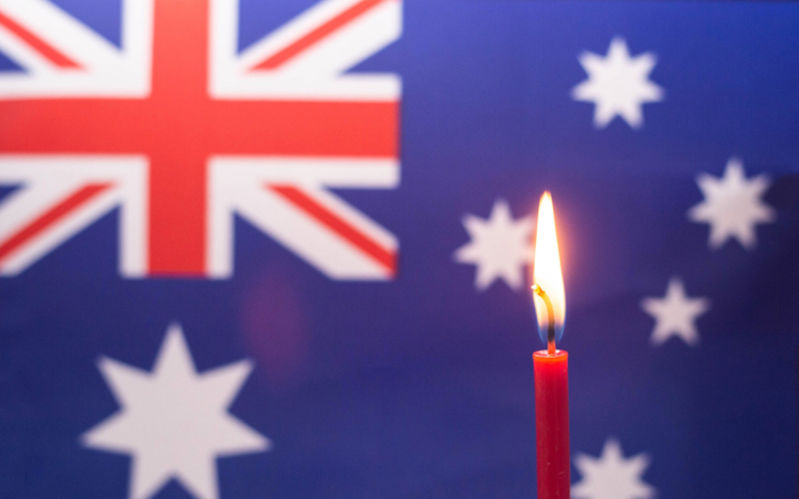Are we the terrorists?
December 17, 2024
It’s ten years since the Lindt Café siege by a member of Islamic State who, despite multiple warnings, was not of concern to ASIO or the police. Yet Man Haron Monis’ attack had all the commonly accepted characteristics of terrorism.
Since then, and after successive events in central Melbourne and the shooting of Curtis Cheng in Paramatta in 2015, ASIO and State police have tried to clarify what a terrorist event is, how better to anticipate one, and how to deal with it promptly.
Soon after the Adass Israel synagogue fire on 6 December, Victoria police confidently called it a ‘targeted’ terrorist attack, even though the arsonists and their motives are still unknown. In contrast, NSW police suspect that those responsible for anti-Israel graffiti and burned-out stolen cars in several places in Woollahra, soon after in December, are connected to underworld organised crime, warring families and bikie gangs.
Even if both December events were targeted, and were reported as anti-Semitic, how do we know if they were terrorist attacks or not? And why does it matter?
Terrorism is a much more serious crime than vandalism and theft. But to anticipate, identify, and deter it, and prove it once it’s happened, requires a perpetrator with a political or religious motive to be identified, not just the intended target. Without arrests in Victoria or NSW, that isn’t yet possible.
On 8 December, Prime Minister Anthony Albanese declared he believed that the attack on the Adass Israel synagogue in Ripponlea was an act of terrorism ( ABC). ‘Quite clearly terrorism is something that is aimed at creating fear in the community and the atrocities that occurred at the synagogue in Melbourne clearly were designed to create fear in the community and, therefore, from my personal perspective, certainly fulfil that definition of terrorism’, he said.
On 10 December Opposition Leader Peter Dutton declared a Coalition government would fund the installation of armed guards at Jewish schools and synagogues, and tighten migration laws to stipulate that people who commit acts of anti-Semitism would have their visas cancelled. Clearly, he too accepted that anti-Semitism and terrorism are identical.
An alternative possibility, in an age of fake news, is that one or two false flag attacks, in Melbourne or Sydney or both, were timed to coincide with Australia’s recent moves to join the international majority in support of the international courts and human rights agencies calling for an end to the genocidal process in Gaza and Israel’s occupation of the West Bank.
Why this matters is how Australia decides who is a terrorist and what is terrorism, and makes policy decisions based on that.
Because ‘my freedom fighter is your terrorist’, there’s no universally agreed definition of terrorism. The UN calls for member states to resist terrorism, but cannot decide which of many organisations listed by member states are terrorists, let alone member states themselves.
How does Australia list terrorists? The government takes advice from ASIO and the police about nominating a terrorist organisation. Although our list is shorter than those of our Five Eyes partners, the US, UK, Canada, and even New Zealand, it includes groups like Hezbollah, Hamas, the Houthi, and Hayat Tahrir al-Sham (HTS), none of which threatens Australia, but are all regarded as terrorists by us and our Western allies. Or were, until the HTS coup in Syria.
The Australian Criminal Code (1995, S 102.1) provides the criterion for listing as ‘involvement in or support of planning, preparation, or execution of terrorist acts’. It doesn’t say where or against whom.
For Australia, a terrorist act or threat of a terrorist act is one intended to advance a political, ideological or religious cause, and to coerce or intimidate an Australian or a foreign government, or public, or section of the public. Its aims are to cause serious harm to persons or the public, damage to property, or serious disruption of public utility, including electronic systems and transport. (Bernadette Zaydan, P&I, 6 November 2024).
But note here ‘or a foreign government, or public, or section of the public’. Once we hang the ‘terrorist’ target around the neck of any organisation or individual that any of our allies claim coerces or intimidates them, the consequences follow. Without any recourse to international law, Australia and our allies arbitrarily designate terrorists, or terror organisations, and are then implicated in fighting them, as in fact we are in Yemen, Israel, and the Philippines.
State terror
The criteria Australia adopts for identifying terrorists should be equally applicable anywhere. The acts of Israel since 1948, and particularly since October 2023, meet the criteria we accept as terrorist, just as Hamas does: advancing a political, ideological or religious cause, and coercing or intimidating a foreign government, or public, or section of the public. The aims of the IDF as declared by Israeli ministers meet Australia’s definition: they are to cause serious harm to persons or the public, damage to property, or serious disruption of public utility, including electronic systems and transport. And much more, including ethnic cleansing and genocide.
What Israel and its US ally are doing is State Terror. Of course Netanyahu will not call it that, and the American definitions of terrorism don’t mention states as potential terrorists. So Australia, by supplying weapons to Israel and refraining from listing the government of Israel or the IDF as terrorist organisations, is also complicit in State Terrorism.

